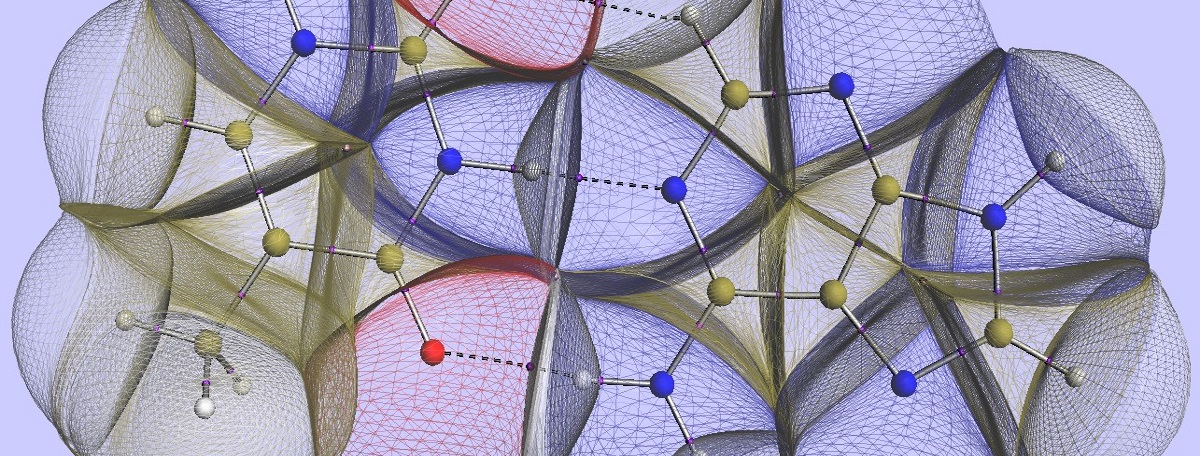The central theme of our research is Quantum Chemical Topology (QCT), a rigorous bridge between modern quantum mechanical wave functions and chemical insight and prediction.
The mathematical branch supporting QCT is that of dynamical systems, which defines a number of concepts and uses a mathematical language that guides the QCT’s interpretation of chemistry as well as its predictive capacity.
A major research effort to realise the latter is in the shape of a protein force field, designed from scratch, and currently called QCTFF. The topological atoms determine how a system’s energy is partitioned. Combining this QCT partitioning with the universal quantum expression of energy, leads to four types of fundamental energy contributions. The first of these is intra-atomic and the remaining three inter-atomic: (i) atomic self-energy, (ii) Coulomb energy, (iii) exchange energy and (iv) correlation energy. All structural and dynamic effects in a molecular system emerge from the interplay of these contributions. The machine learning method kriging captures well how they change in response to a change in nuclear configuration. Moreover, the Coulomb energy is represented by a converging multipolar series expansion when the nuclei are sufficiently far apart. Finally, incorporation of reactions is perfectly possible without the need for conceptual change or ad-hoc modifications.

